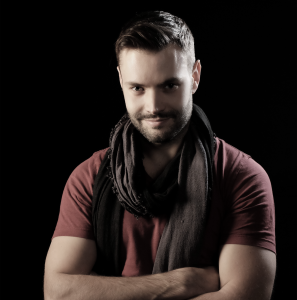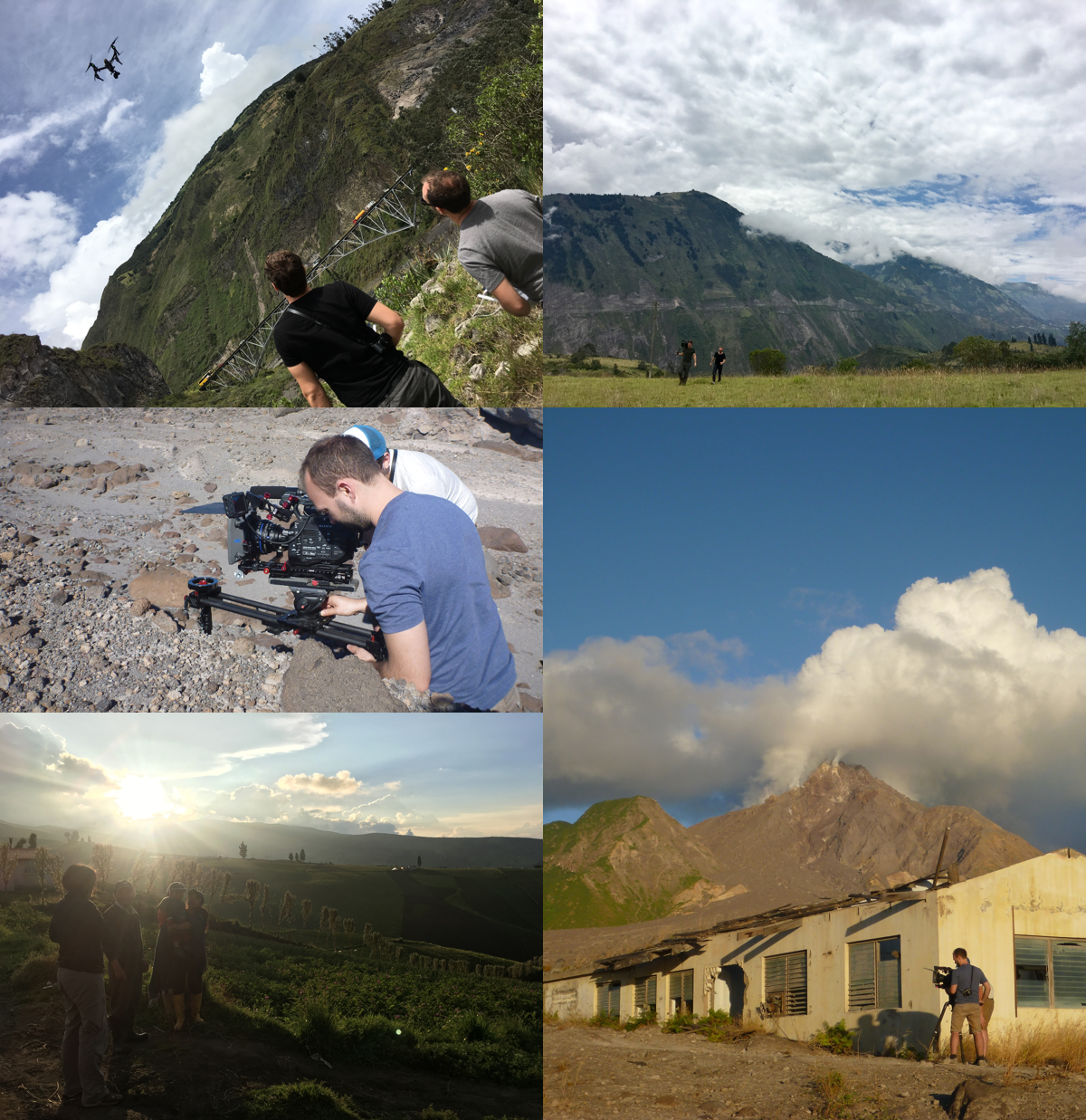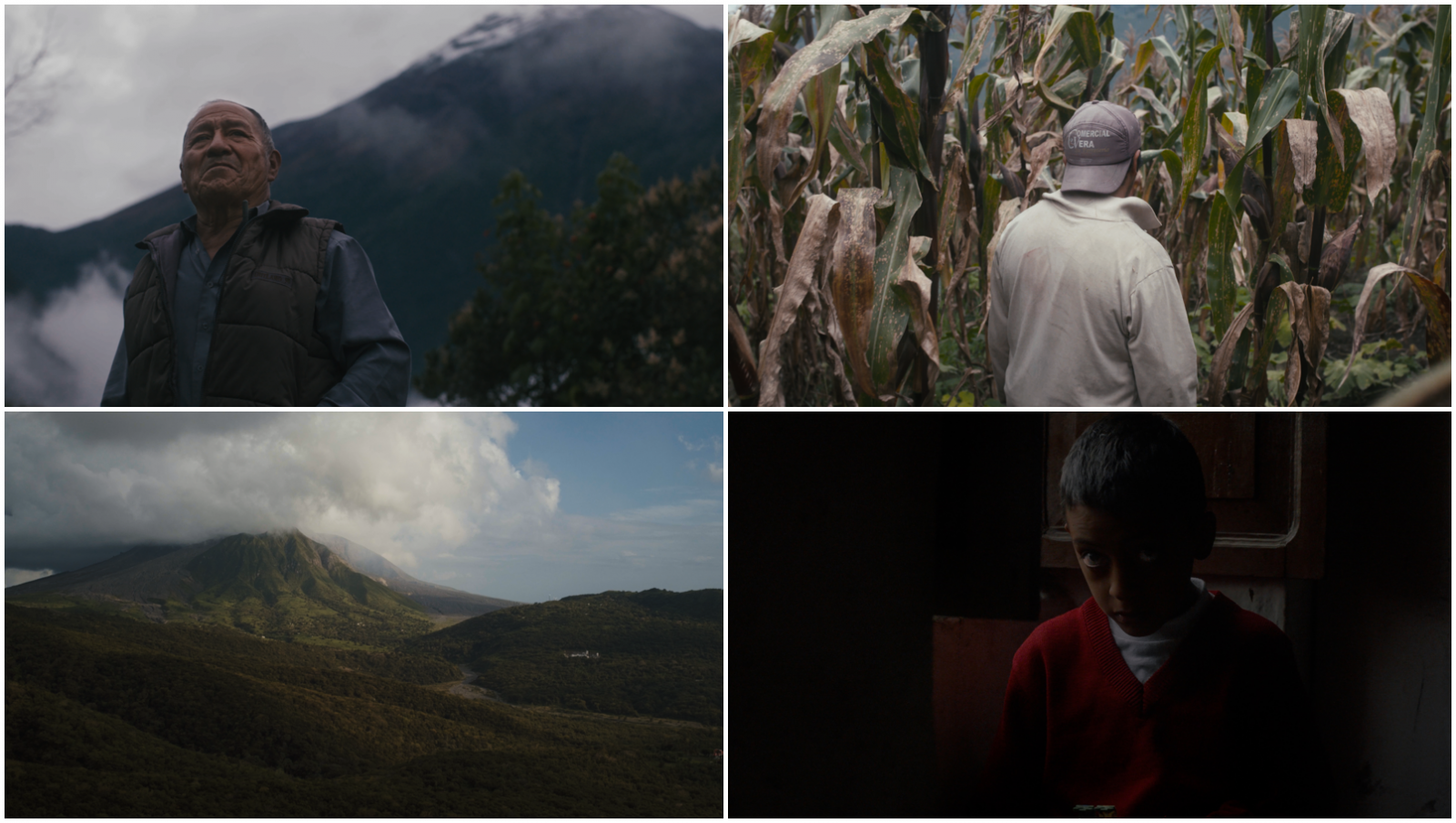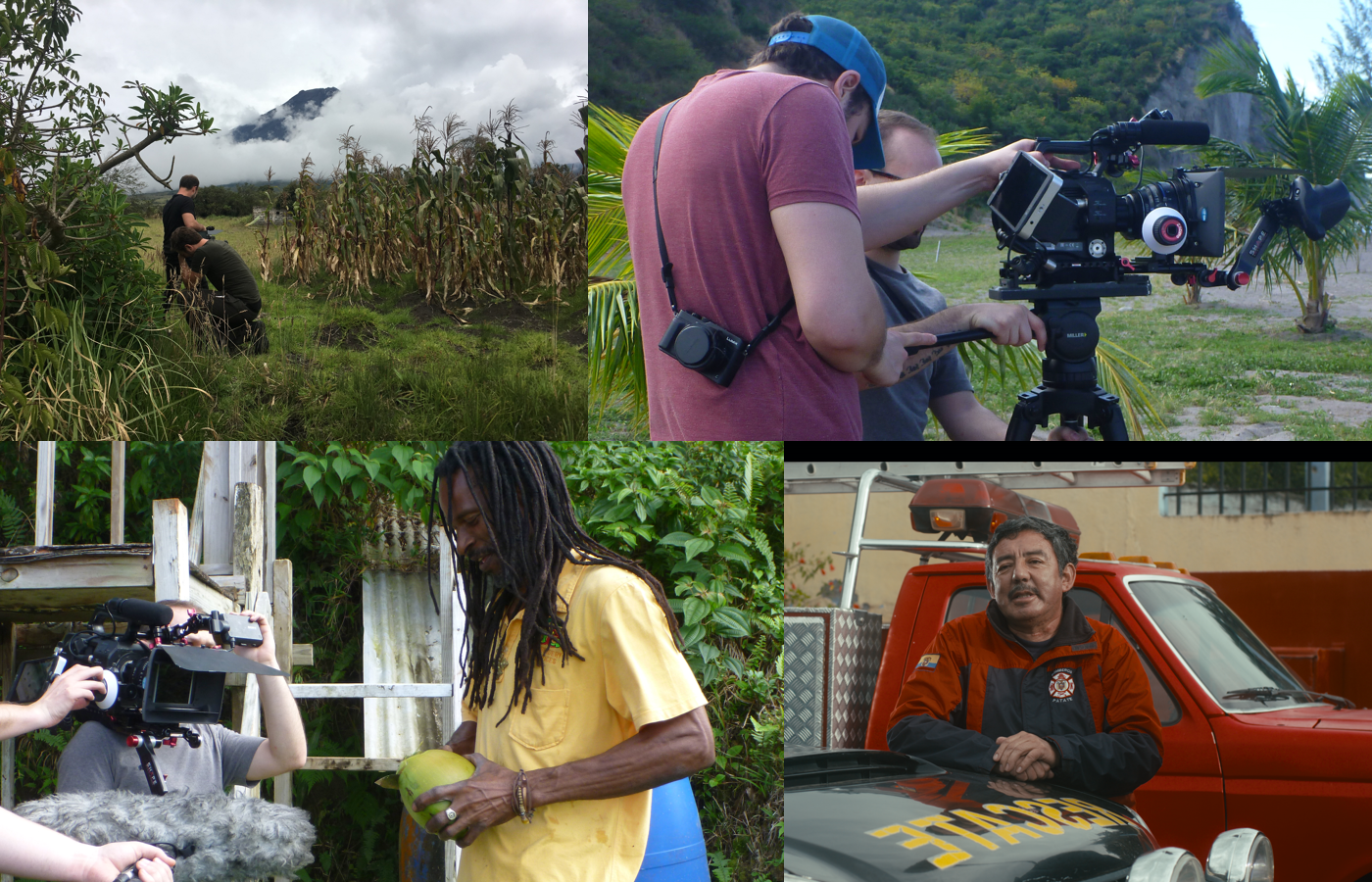
Dear readers, today our blog will host Ryan Stone from Lambda Films. He will tell us his story and perspective behind the camera while documenting people’s lives constantly exposed to volcanic risk. If you want to get a quick taste of today’s content, just take a long breath and watch this video: https://www.lambdafilms.co.uk/video-production/an-eclipse/.

Ryan Stone is the co-founder & Creative Director of Lambda Films, a video production company and animation studio based in the UK.
Lambda Films have developed a specialism in storytelling and natural hazards; producing a variety of video and animation content to help educate vulnerable communities living with volcanic risk. These films have always been in collaboration with researchers, organisations and academics from across the globe.
Hello Ryan, Please tell us about the aim and perspectives of a director involved in natural hazard films
When starting with any film project, we have to be clear about what are the objectives and who are the audience, and ensure everything we shoot supports those two considerations. In the case of our natural hazard films, we have to achieve a balance between imparting useful information for a non-scientific audience and keeping the audience engaged. (so that they can they learn.) We have to ensure both the information and visuals are pitched just right, as the viewers are most likely to be those at risk of future events.
Our first ever brief was simply a series of interviews, which provided the useful information but was lacking in engaging and varied visuals, so since, we have ensured all of our subsequent collaborations afford us enough time to film the interviews and shoot relevant lifestyle footage. This b-roll footage, whether it’s of the interviewee at work, or visiting the ruins of their former home, adds an extra depth to the narrative, keeping the visuals interesting and adding further impact to their words.
We try to keep the ‘actors’ (i.e. local people) at the front and centre of the films – essentially the stars of the show – whilst also recognising the extent to which the various locations, and the hazards themselves also play a major role in the films. This footage can both demonstrate the beauty and pressures of the natural environment, as well as some of the vulnerabilities and strengths of the communities that live with the risk of natural hazards.
As a director, you always have to consider the visual impact on the audience, and ensure shots look interesting, relevant and are able to support the, often sensitive and/or scientific content. Personal stories or scientific explanations can often be quite lengthy, so a director has to consider the production as a finished film, not just the individual scenes in isolation.

How do you balance the requests you receive with your own ideas and director’s perspective?
I think that finding that ‘balance’ is ultimately where creativity comes in. Our partners have the criteria they need to fulfil; capturing a particular story, or imparting some specific information for example, but how we achieve that can be down to myself as director, our production crew or even our editors. Ultimately, it all comes down to trust and good communication. As a creative business we hope that our partners trust us with their objectives and allow us the freedom to achieve them while in pursuit of producing the highest quality film we can.
If we can achieve that harmonious relationship with our partners then that always results in the best film for everyone involved.
This does have its difficulties however, as creativity is of course subjective. Sometimes clients have very firm ideas of what they want, or they don’t agree with our direction; nevertheless we always feel it’s our responsibility to try and steer them towards what’s best for the video and achieving the objectives. Sometimes we’re able to be persuasive but other times, we just have to let it go.
At the end of the day, we’re pleased if our client is pleased, we’re not a team of ego-centric George Lucas’!
Please tell us about some of the challenges while shooting a film about natural hazards, and some behind-the-scenes experiences.
While we have adapted over the years to meet the demands of filming natural hazards, there will always be challenges and surprises with every new location.
One of our biggest challenges has always been producing the cinematic style that we’re known for, while working with a smaller production footprint, and in difficult locations. Our productions are usually supported by a van-load of equipment, but when filming within the crater of a volcano, that’s not a luxury we have! In these instances, we have to work smarter, foregoing professional lighting and instead using reflectors, or natural light sources to replicate a professional set-up.
It was a volcano hike like this that remains one of my fondest experiences; waking up at 2am to climb La Soufriere in St Vincent in order to capture a magnificent sunrise over the crater. For hours we climbed in the dark, laden with our packs and production gear, only to reach the summit and find the whole area shrouded in mist and no discernible sun in sight… We often suffer for our craft, but every now and then, the perfect shot makes it worthwhile.
The hikes to a volcano crater and back likewise have their challenges; working at different altitudes will inevitably pose a number of problems for both our crew and the gear. Firstly, there is the issue of carrying expensive and delicate production equipment up mountainous terrain, which is always a fun challenge! It’s always a tense moment unpacking and testing everything following a difficult hike, so far, we’ve been lucky…
However, what is less expected is the effect of changing temperatures between the highest and lowest points. While filming Nevado del Ruiz in Colombia, our crew experienced 0°C temperatures while filming on the slopes, which rose to 40°C as they descended during the same day! The change in temperature and altitude had a detrimental effect on various bits of the kit, as well as the personal comfort of the crew who had to carry multiple sets of clothing as well as the production gear.
One of our more challenging shoots took place in Montserrat, where the island was experiencing rolling blackouts – with the north half of the island with power, then the central part (the south is uninhabited), and so-on. These blackouts lasted a fixed 6 hours at a time and hugely influenced our production timetable. Shooting in the field meant we had a number of batteries that required regular charging and so we had to be more agile, and take advantage of available power whenever possible to ensure we always had the capacity to work!

What does the impact of this work mean to you?
We work with a wide-ranging set of clients and partners, from established brands such as Nike, Barclays and eBay to small start-ups or charities. However, our company mission is to produce work that affects positive change, and our direction is increasingly heading towards more humanitarian and short- documentary filmmaking.
In pursuit of this, we’ve found a natural connection to document natural hazards, we admire the power of the natural world, but ultimately wish to contribute to a project that safeguards and improve the lives of people.
Why is this type of work important?
The aim of the projects is to learn lessons from the past. Many of disaster stories we film are either fading from memory or are within countries or communities who are unable to effectively analyse and document the details.
Therefore, our role is to talk to a variety of people with different experiences and accounts of the disaster; locals, scientists, politicians and government workers, who can comment on topics such as warnings, evacuation, communication and local procedures. As a final film, this helps articulate what was effective, what wasn’t and where improvements could be made to reduce risk in the future.
In essence, this work has the potential to save lives and livelihoods, and there can be no greater importance than that.

